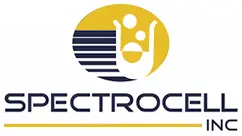Crawl Budget as a Factor of SEO
Time to Read: 4m 0s
Every minute of every day, bots are crawling the internet and indexing every single website. The internet is obviously a vast place, and that means there’s a lot of websites getting crawled and indexed on the daily. Have you ever stopped to consider how a crawl budget could be impacting your website?
What is a Crawl Budget?
A crawl budget is how many pages get crawled and indexed on a given website within a specific amount of time. Essentially, a crawl budget signifies how much time bots will dedicate to crawling and indexing your website. Since the internet is such a massive entity and bots are tasked with crawling and indexing websites all day every day, it’s imperative that bots have crawling parameters. Otherwise, it wouldn’t be feasible to crawl every website at the frequency that they do.
How are Crawl Budgets Determined?
Crawl budgets are determined by crawl limit and crawl demand. According to Google Webmasters the crawl limit “represents the number of simultaneous parallel connections Googlebot may use to crawl the site, as well as the time it has to wait between the fetches.” Google Webmasters goes on to explain the two factors that determine crawl demand which are:
- “Popularity: URL’s that are more popular on the Internet tend to be crawled more often to keep them fresher in the index”
- “Staleness: Google’s attempt to prevent URLs from becoming stale in the index”
Therefore, crawl rate and crawl demand are utilized to determine a website’s crawl budget.
How a Crawl Budget Impacts your SEO Efforts
Since each website has an allocated crawl budget it’s imperative to make sure your site is optimized for crawling. It’s important to evaluate your website’s XML sitemap, robots.txt and site structure to ensure that entities are fully optimized. The XML sitemap will provide a clear navigation path for the bots to follow and includes a priority of which pages should be crawled more often. The robots.txt indicates which resources the bots can and cannot crawl within your website, such as a customer login page.
It’s vital to ensure that your XML sitemap and robots.txt are fully optimized for crawling because if the bots can’t access individual pages or resources that are pertinent to your website, you’re eliminating your opportunity for growth in organic marketing. If the bots can’t effectively and efficiently crawl your website all of your other SEO efforts are irrelevant.


Ways to Optimize your Crawl Budget
There are multiple ways to further optimize the crawl budget for your website. Some of the key considerations are below:
- Site Speed: If your website’s load time is high it’s going to take longer for pages to load, which results in fewer pages being crawled and indexed by the bots. Therefore, it’s important to ensure that your site is optimized for speed to maximize your crawl budget.
- Crawl Errors: Google Search Console is a critical component when optimizing your crawl budget. If Google is encountering errors when crawling your website and you see crawl errors flagged in Search Console, they need to get addressed.
- Internal Linking: Increasing the amount of internal linking on your website allows the bots to crawl and index more pages across your website.
- Orphan Pages: An orphan page is a page that has no internal or external links to said page. To optimize your crawl budget, you should eliminate any orphan pages that may exist on your website.
- Navigation: Your website should have a clean navigation structure, so it’s optimized for crawlability. A website’s navigation should have a top-level category page with subsequent sub-category pages beneath it.
- Redirect Links: It’s important to evaluate the redirect status of your website. If your site is filled with redirected links it takes time for the bots to follow the redirect path, which results in more time being taken away from crawling and indexing the remainder of the site.
- Incorrect URLs in the XML sitemap: The URLs included in the XML sitemap should be indexable pages. XML sitemaps should not include URLs that no longer exist or are redirecting because that also takes time away from your sites crawl budget. That’s why it’s vital to ensure your XML sitemap consists of clean and active URLs.
Crawl Budget is an Integral Component to Search Engine Optimization
A website’s crawl budget should not be overlooked. A lot of information can be taken away from the data derived from bots crawling and indexing your website. It’s vital to monitor these metrics to ensure that you are optimizing your website’s crawl budget in the most effective and efficient way possible.
Contact Ecreative
Our ECW team provides comprehensive and digital marketing strategies that help business owners navigate the ever-changing requirements of Google and other search engines. Contact us for more information on our digital marketing program options – and how we can help optimize your website’s crawl budget.




